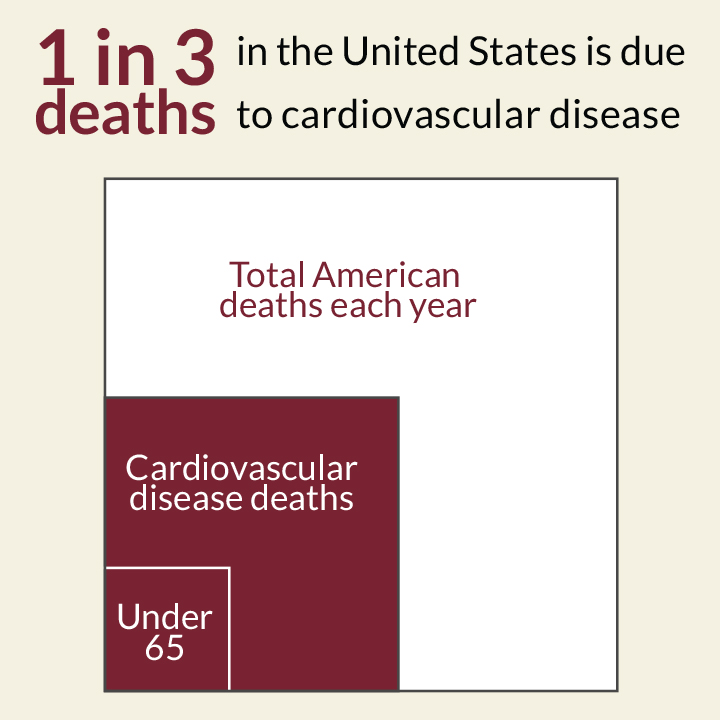Can
a calculator predict your risk of heart attack and stroke?
The University of Ottawa
 Canadian researchers have built and
validated an online calculator that empowers individuals to predict their risk
of cardiovascular disease.
Canadian researchers have built and
validated an online calculator that empowers individuals to predict their risk
of cardiovascular disease. Their process was published in the journal CMAJ, and the calculator is available at projectbiglife.com.
Cardiovascular disease, a group of
conditions that include heart attack and stroke, is the number one killer in
Canada.
While risk calculators already exist, they usually focus on factors that require medical tests, like blood pressure and cholesterol levels.
While risk calculators already exist, they usually focus on factors that require medical tests, like blood pressure and cholesterol levels.
“What sets this cardiovascular risk calculator apart is that it looks at healthy living, and it is better calibrated to the Canadian population,” said Dr. Doug Manuel, lead author on the paper and a senior scientist at The Ottawa Hospital, professor at the University of Ottawa, and a senior core scientist at the Institute for Clinical Evaluative Sciences (ICES).
Based on survey data from over
100,000 Canadians, the calculator lets individuals accurately predict their
risk of hospitalization or death due to cardiovascular disease within the next
five years.
For example, if their risk is five percent, it means that five in 100 people like them will experience a serious cardiovascular event in the next five years.
The calculator also provides heart age, an easy-to-understand measure of how healthy the heart is.
For example, if their risk is five percent, it means that five in 100 people like them will experience a serious cardiovascular event in the next five years.
The calculator also provides heart age, an easy-to-understand measure of how healthy the heart is.
Factors in the Cardiovascular
Disease Population Risk Tool (CVDPoRT) calculator include:
- Age
- Smoking status and lifetime exposure
- Alcohol consumption
- Diet
- Physical activity
- Stress
- Sense of belonging
- Ethnicity
- Immigration status
- Education
- Socioeconomic status of the neighbourhood
- Diabetes
- High blood pressure
“A lot of people are interested in
healthy living, but often we don’t have that discussion in the doctor’s
office,” said Dr. Manuel. “Doctors will check your blood pressure and
cholesterol levels, but they don’t necessarily ask about lifestyle factors that
could put you at risk of a heart attack and stroke. We hope this tool can help
people – and their care team – with better information about healthy living and
options for reducing their risk of heart attack and stroke.”
The calculator can also be used by
policy makers to better understand population health risks and help plan for
the future.
“In cardiovascular disease, an ounce
of prevention is worth a pound of cure,” said Dr. Manuel. “Decision-makers need
to understand the underlying causes of these conditions, like access to
nutritional food, and being able to walk or bike in a community.”
CVDPoRT will be added to a list of
existing calculators on Project Big Life that help Canadians
estimate their own life expectancy based on habits and lifestyle choices.
The calculator was based on data
from the Statistics Canada Canadian Community Health Surveys and housed at
ICES. Currently calibrated for use in Canada, it can be adapted for any of the
100 countries around the world that collect health survey data.
Funding: This study was possible because of generous donations
to Practice-Changing Research at The Ottawa Hospital.
It was also supported by the Canadian Institute for Health Research, the Canada
Research Council Chair in Health Services Research, the Institute for Clinical
Evaluative Sciences, and the Ontario Ministry of Health and Long-Term Care.
Full reference: Development and validation of a cardiovascular disease
risk prediction model using population health surveys: The Cardiovascular
Disease Population Risk Tool (CVDPoRT). Douglas G. Manuel, Meltem Tuna, Carol
Bennett, Deirdre Hennessy, Laura Rosella, Claudia Sanmartin, Jack V. Tu,
Richard Perez, Stacey Fisher, Monica Taljaard CMAJ. July 23, 2018.